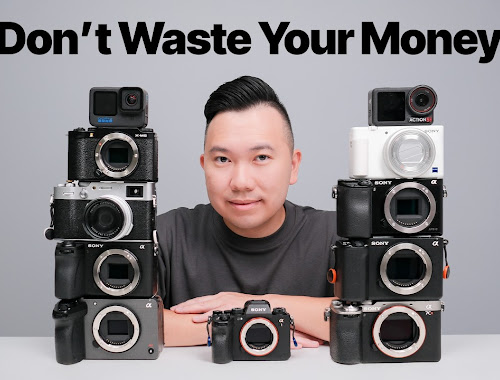Painting with Time: The Enchanting World of Long Exposure Photography
"Ever feel like you could just stretch time in a photograph? Like, make those crashing waves turn into silky smooth goodness, or blur a whole crowd of people into a ghostly flow? That's the awesome playground of long exposure photography. It's where you get to play with time and light in seriously cool ways, turning everyday scenes into something you've gotta look twice at – sometimes dreamy, sometimes a little surreal, always captivating. It's not just snapping a picture; it's like painting with time itself. Let's dive into this fascinating world, shall we?"
At its core, long exposure photography involves intentionally keeping a camera's shutter open for a significant duration. Unlike conventional photography that freezes a fleeting instant, this technique embraces the passage of time, allowing the sensor to accumulate light and record movement as fluid blurs rather than sharp details. The results can range from the silken smoothness of flowing water and the ghostly trails of moving crowds to the luminous tapestry of nightscapes painted by starlight.
The allure of long exposure has captivated numerous artists, each pushing its boundaries to create unforgettable imagery:
Lucie and Simon – The Poetics of Absence in "Silent World": This Parisian duo masterfully employed dense Neutral Density (ND) filters to conjure hauntingly deserted scenes from typically bustling locales. Their long exposures effectively erased the transient elements – people, vehicles – leaving behind only the stark beauty of static architecture. Their subtle use of compositing in post-production ensured the grounded realism of these enduring structures against the ethereal emptiness.Darren Almond – Whispers of Moonlight in "Full Moon": Almond's evocative "Full Moon" series transports viewers to landscapes bathed in the subtle glow of moonlight, captured through exposures lasting up to fifteen minutes. These extended durations not only mimic the luminosity of daylight but imbue the scenes with an otherworldly ambiance. Colors subtly shift under the lunar illumination, and the Earth's rotation transforms distant stars into delicate trails across the night sky, creating a dreamlike and slightly unsettling beauty.Alexey Titarenko – Echoes of Turmoil in "City of Shadows": In the somber atmosphere of post-Soviet St. Petersburg, Titarenko used long exposures to transform commuting crowds into flowing, indistinct masses. Rendered in a stark monochromatic palette, these blurred figures eloquently conveyed the socio-economic anxieties and the feeling of collective anonymity that permeated the era.Henry Prestes – Cinematic Dreams in the Night: Prestes masterfully blends selective color with the soft ambient light of foggy nights to craft images that feel like stills from a captivating film. His long exposures allow him to capture faint, often unseen, light sources, while carefully enhanced saturation lends his nocturnal narratives a distinct science-fiction quality, charged with potent emotional resonance.Hiroshi Sugimoto – Encapsulating Time in "Cinematic Time Capsules": Sugimoto's conceptually brilliant series involved opening his camera's shutter at the precise moment a film began and closing it only when the final credits rolled. The result? A screen bathed in a luminous white rectangle within an otherwise empty theater. These profound images challenge our perceptions of presence and absence, memory and the passage of time itself.Juergen Freund – Unveiling Nature's Secrets with "Mushroom Magic": To reveal the delicate, almost invisible bioluminescence of ghost fungi, Freund meticulously combined eight separate five-minute exposures. The resulting images are a breathtaking spectacle, revealing a hidden natural phenomenon that remains unseen by the naked eye, a testament to the power of long exposure to unveil the unseen.
To embark on your own long exposure journey, a few key pieces of equipment and an understanding of fundamental settings are essential:
Essential Gear:
- A Camera with Full Manual Control: This is crucial for dictating ISO, aperture, and, most importantly, shutter speed.
- An Unwavering Tripod: Any movement during a long exposure will result in unwanted blur. A sturdy tripod is non-negotiable.
- Neutral Density (ND) Filters: These act like sunglasses for your lens, reducing the amount of light entering and allowing for longer shutter speeds even in bright conditions. An ND1000 is a versatile starting point for significant light reduction.
- A Remote Shutter Release or Timer: Minimizing camera shake during the exposure is paramount. A remote or the camera's self-timer will ensure a crisp image.
Mastering Camera Settings:
- Embrace Manual Mode (M): Take complete control over your ISO, aperture, and shutter speed.
- Disable Image Stabilization (IS/VR): When using a tripod, image stabilization can actually introduce blur. Turn it off.
- Set ISO to its Lowest Native Value: This minimizes digital noise in your long exposures.
- Choose Aperture Deliberately: Your aperture selection will primarily control your depth of field. Consider whether you want a shallow focus or everything sharp.
- Unlock Bulb Mode (B): For exposures longer than the standard 30-second limit on most cameras, bulb mode allows you to keep the shutter open for as long as you hold the release or use a remote with a locking function.
Decoding Light: Calculating Exposure Times:
Calculating the correct shutter speed when using ND filters is crucial. The filter's "factor" indicates how many stops of light it blocks. For example, an ND1000 filter has a factor of 1000, meaning it reduces the light by 10 stops.
To calculate the new shutter duration, multiply your metered (unfiltered) exposure time by the filter factor. Thankfully, handy smartphone apps like Lee Stopper can automate this calculation, simplifying the process.
While technical mastery is important, the true magic of long exposure lies in its creative application:
- Harnessing Darkness: At night, be mindful of overwhelming your image with too many bright light sources. Strategic framing can isolate or emphasize key points of illumination.
- Guiding the Eye: Use focal length and composition to direct the viewer's attention to the static elements within the blurred motion.
- Embracing the Elements: Leverage natural elements like fog, moving water, and the trails of light to inject emotion and dynamism into your images.
- Refining the Mood: Don't underestimate the power of color grading in post-processing to further enhance the mood and atmosphere of your long exposure photographs.
A Final Thought: Seeing Beyond the Moment
Long exposure photography is more than just a technical exercise; it's an invitation to perceive time and space in a fundamentally different way. Whether you're smoothing turbulent waters into glass, rendering bustling crowds as spectral blurs, or capturing the ethereal glow of the night, the possibilities are as boundless as your own creative vision. So, embrace the experimentation, slow down your process, and allow your imagination to flow as freely as the very motion you seek to capture.


















0 comments:
Post a Comment